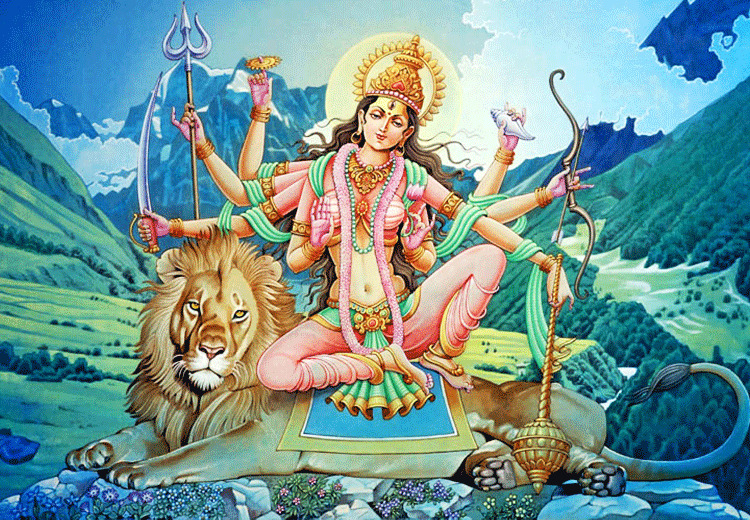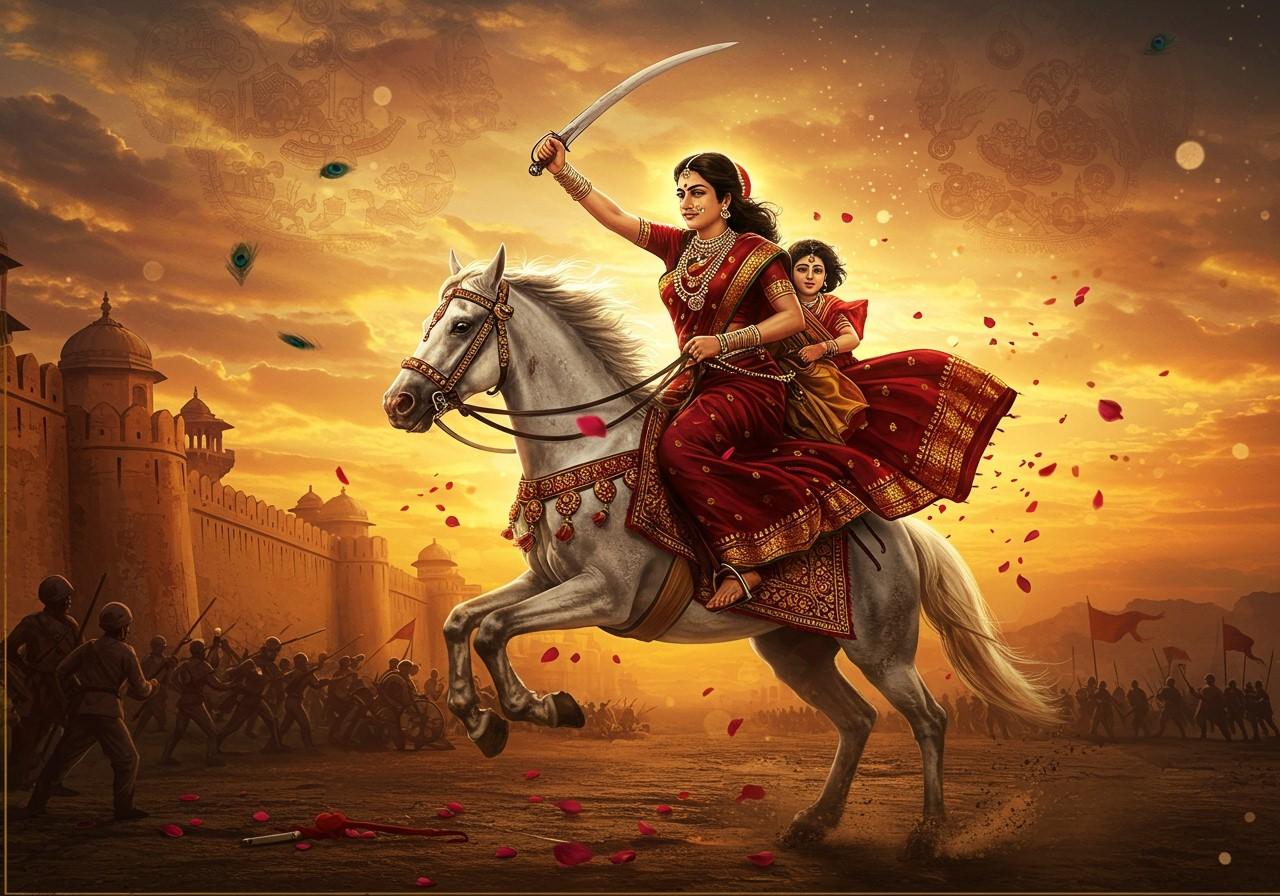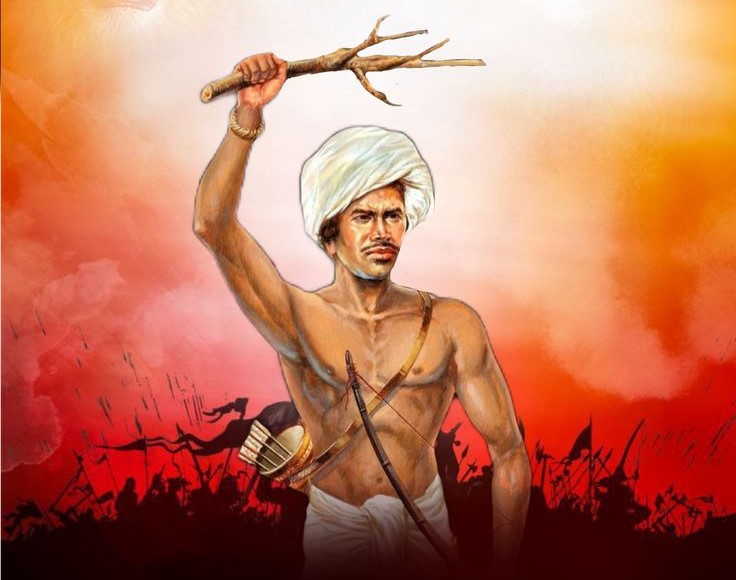By Ranga Ranjan Das
The celebration of Durga puja across India not only reflects a major expression of Hinduism, at the same time it symbolizes the essence of shakti worship (worship of power) and the significance of woman. Durga puja is a major festival in some of the states like West Bengal, Assam, Orissa, Jharkhand, and some other northern states as well as north eastern states. The worship of shakti is going on since time immemorial. The mythological contexts and presence of shaktipeeth (seat of power) across the country, including Pakistan, Bangladesh and Nepal, however, testify the significance of shakti worship. In Assam, Kamakhya temple situated at the Nilachal hills is considered as one of the major destination of shaktipeeth. Woman is represented as shakti. Devi Durga is considered as the immense source of power, created by three principal gods: Brahma, Vishnu and Shiva, with ten hands, adorned with weapons to overcome the undefeated power of demon king Mahisasura, who made a chaos in the triloka, (heaven, earth and underground, referred as swarga, mortya and patal). After a long battle, Durga is successful to destroy the demon king. Durga puja symbolizes the victory of truth and positive energy over the negative energy and adarma (anti-riteousness/evil deed).
Among different sects of Hindu religious tenant, worship of shakti represented by woman carve a wonderful niche in the Indian context. The various manifestation of shakti, like Adi Sakti, Sati, Uma, Parvati, Durga and Kali are worshipped in various forms. The religious scriptures denotes various names of Durga such as Durgatinasini, Jagadamba, Bhavani, Basanti, Vaisnudevi, Sherabali, Brahmasarini, Katyani, Kalratri, Siddhidatri, Salyaputri, Scondhamata and Kushmandha; the various forms of Kali include Sribrahmamoyi Kalimata, Swashan Kali, Kamala, Bagala, Bhairabi, Matongi, Tarabati, Dakhina Kali, Tripureswari, Bhubeswari, Dhumabati, Sinnamasta, and many more. As reported, in Indian contexts, there are more than fifty shakti peeth, a few are reported from our neighbouring countries. These shakti peeth owe its origin to various body parts of Sati, dissected by sudarshan chakra of Lord Vishnu, while Lord Siva, consort of Sati, in a mood of destructive dance, tandav nritya; carrying her body who sacrifice her life/immolated in the fire of yajnya, conducted by her father King Daksha. Puranas reveals that Sati is the consort of Lord Shiva. During her young age, Sati worshipped Lord Shiva and desired to get him as her husband. She is the daughter of King Daksha, who never supported his daughter’s decision. Sati remained adamant in her decision. Satisfied with her true devotion, Shiva accepted her as his consort. It really dissatisfied King Daksha. Once Dakshas organized a massive yajnya, where he invited all the Gods, Goddess, Devas, Sages, but did not invite his son-in-law and daughter Sati. At this Sati became very upset and had deep pain. She desired to attend the occasion without invitation. Shiva suggested to not attend. But she did not follow his suggestions. Seeing her at the ceremony, Daksha insulted her and also Lord Shiva pointing out the way of life that Shiva follows in Kailash parbat (mountain) and his cmpanions. She could not tolerate such humiliation in front of all. She had taken the ultimate decision and sacrificed her life. The news of her death reached Lord Shiva. He rushed to the spot, took the body and started his destructive dance across the globe. All the Gods and Devas knew the consequences of such a dance. They were in great fear. Later on Lord Vishnu did the job. The body parts of Sati are spread out all across the country. As revealed, the name of such shaktipeeth, location and parts of body includes: Kalighat, Kali temple, Kolkata (right toes); Kamakhya temple, Guwahati (genital organ); Vishalakshi temple, Varanasi (earrings); Taratarini temple, Brahmaour, Orissa (breasts); Bimala temple, Puri (feet); Kankalita temple, Birbhum, West Bengal (pelvis); Saptashrungi temple, Vani, Maharastra (right arm); Shondesh temple, Midnapur, West Bengal (bones); Jwalamukhi temple, Kangra, Himachal Pradesh (tongue); Hinglaj Mata temple, Balochistan, Pakistan (part of the head); Shrinagar shaktipeeth, Jammu and Kashmir (anklets); Naina Devi temple, Bilaspur, Himachal Pradesh (eyes); Katyayani temple, Vrindaban, Uttar Pradesh (back); Chamundeshwari temple, Mysore, Karnataka (hair); Jogulamba temple, Alampur, Telangana (upper teeth), Brahmaramba temple, Srisailam, Andra Pradesh (neck); Sugandha shaktipeeth, Shikarpur, Bangladesh (nose); Karatal Shaktipeeth, Nepal (hands), Bahula Shakipith, Ketugram, West Bengal (left arm); Kalmadhava shaktipeeth, Amarkantak, Madhya Pradesh (right arm); Shakti temple, Karavpur, Maharashtra (left wrist); Shrinakshi shaktipeeth, near Karur, Tamilnadu (cheeks); Vibhash shaktipeeth, Tamluk, West Bengal (left ankle); Harshat mata temple, Abhaneri, Rajasthan (finger); Mahakali temple, Ujjain, Madhya Pradesh (upper lip); Dakshina Kalika temple, Kalighat, West Bengal (right toe); Chintpurni temple, Una, Himachal Pradesh (feet); Ramgiri shaktipeethy, Chitrakoot, Uttar Pradesh (right breast); Manibandh shaktipeeth, Purnagiri, Uttarakhand (navel part); Kamgiri shaktipeeth, Amarnath shaktipeeth, Jammu and Kashmir (throat); Mangala Gauri temple, Gaya, Bihar (breast); Tripura Sundari temple, Udaipur, Tripura (right foot); Lalita Devi temple, Allahabad (finger); Bhadrakali temple, Kurukshetra, Haryana (ankle); Mangalagauri temple, Gaya, Bihar (breast); Mahalakshmi temple, Kolhapur, Maharashtra (eye); Bhuvaneswari temple, Maharasthra (left arm), Shakambaru temple, Sambar, Rajasthan (head); Chhinnamasta temple, Ramgarh, Jharkhand (head), Ambaji temple, Gujarat (heart), etc. Some of these shaktipeeths is still vibrant. Devotees all across the India and also from outside use to visit to fulfill the desire of shaki devotion. Kamakhya temple attracts huge number of devotees every year. Specially, during Ambubasi, the congregation of masses testify to the power of shaktipeeth.
In Indian context, especially in Hindu puranic texts, woman occupies an important place as a Goddess. It may be in the various forms of Shakti, and other graceful deities. Some of the Goddess includes Lakshmi and Saraswati. Lakshmi is considered as a goddess of wealth. She is worshipped by Hindu devotees to fulfill the aspiration of wealth. At the same time, Saraswati is considered as goddess of wisdom and knowledge, she is worshipped for empowerment for knowledge. There are various local goddesses in the north eastern context. Basanti and jadadhatri puja is held to appease the mother goddess Durga. Sitala devi is considered as goddess of small pox. Small pox or large pox is considered as a infectious disease. In Assam, people hardly approach modern health care system to cure such diseases. It is negotiated by organizing socio-religious ceremony, offering prayer and praise song related to Maa Sitala (the coolest one). In various places of Assam, we find temple of Sitala at individual level.
Among the ethnic groups of Assam, woman is appeased in the form of various goddesses. Manasa or Bisahari, is considered as a snake goddess. It is worshipped by both Assamese caste population as well as other ethnic groups like Rabha, Boro, etc. Manasa, is also referred as Marai puja. There are various temples in Kamrup district especially in the villages like Pacharia, Gerua, Panchgaon, etc. Every year puja is held in an exclusively way. Sacrifices of domesticated animals are also held. There is close legend popular in South Kamrup district. It is all about the tale of Beula-Lakhindar. Kechai-Khaiti is considered another folk deity among Rabha, Bodos, a folk version of shakti worship. She is appeased by offering sacrifice of domesticated animals. Boro worship goddess Mainao, as a Lakshmi. While examining the religious world view of tribal society of north east, it is found that various goddess occupy an important place in the society. They are required to worship following various rites and rituals to appease them. They are responsible for different factors in socio-cultural life. Some of the goddess is maleovolent, while some are benevolent. In most of the societies, goddesses are provided a space in the household, as a household deity. Among them, goddess Lakhi is worshipped in different forms and ways by tribal societies. In classical Hindu texts, most of the goddess have provided a definite shape, and adorned accordingly. People worship the idol of such goddesses. The idol of Lakshi, Saraswati, Durga, Kali, Basanti, and various forms of Durga and Kali are available. However, traditional societies lacks such forms, and they prepare own shape when required for worshipping. They are known by different names among the followers of traditional religion. Rites and rituals associated with the process of appeasement vary from one society to another. Most of the societies have their own priest, known by different names. In Arunachal Pradesh, nyibu is referred for the priest among many groups, while ochai, is used to refer priest among different groups of Tripura.
Among all the pujas whether it is followed by Hindu devotes or followers of traditional religion, in the north east particularly in Assam, Durga puja transforms into a major festival, referred as Durgotsav. Temporary pandals or makeshift is constructed all across the region. People show different kinds of enthusiasm. In Assam, Durga puja touches all across the society. They participate in the devotion of shakti worship as per vedic tradition and rules. Thanks to the some of the kings of Ahom dynasty who popularized the tradition of Durga puja. Rudra Singha, organized first royally-sponsored Durga puja in Gargaon, the Ahom capital. Another Ahom ruler Pratap Sinha, known as Chukamfa, started building devigrihas (temple of mother goddess) in Assam. He also sent people to Cooch Bihar to learn the art of making clay idols. Shiva Singa, another Ahom ruler, also promoted Durga puja as festival by bringing the Bengali tantric yogi Krishnananda Bhattacharya Nyayabagish to Kamakhya, making the members of royal family as disciples. Swargadeo, Gadadhar Singha played an important role. He popularized the Durga puja among the subject. That was the beginning which is still reflected among the masses of Assam.
Now Shakti worship has been an important part of socio-religious life of Hindus. Durga puja and Kali puja has been common religious festival. In the patriarchal society, the worship of woman goddess in the form of Shakti is always significant. However, when we look around the society, woman is still considered as a vulnerable section of the society. No doubt, woman of India are marching ahead and move parallel to its’ male counterpart, but still there is dominance on woman among many societies across India. Even in the crime scenario, woman is mostly victim. Crime statistics in India reveals that atrocities, subjugation, dominance on woman in India are increasing. They have been still victim of dowry death, honour killing, rape and even incidence of witch hunting is also reported from time to time. Literacy of woman in many traditional societies is less. However, the present Indian government both in the state and central has put emphasis on woman empowerment through various plans, programmes and schemes. It is not enough. The male folk of the society should understand the role and significance of woman in the context of society. How women sacrifice their life being a mother and wife for a family? Can we imagine a woman or girl less home? They are doing jobs and also a home maker. In home, they are taking not only doing household work, at the same time plays a crucial role in the growth and development of child. Nowadays, they are also assisting their husband in the small scale trade. In spite of such commitment, why we should not we provide a safer space for the woman.
In Indian civilization, woman has been provided an important space in the various forms of shakti. It is not only in the puranic contexts. In reality also, we can witness the power of woman. We need that vision to witness woman in such form. In the season of worshipping shakti, we should reinvent and relocate the extreme power of shakti, so that evil power is destroyed and a peaceful harmonious situation prevails in the contemporary societies.






